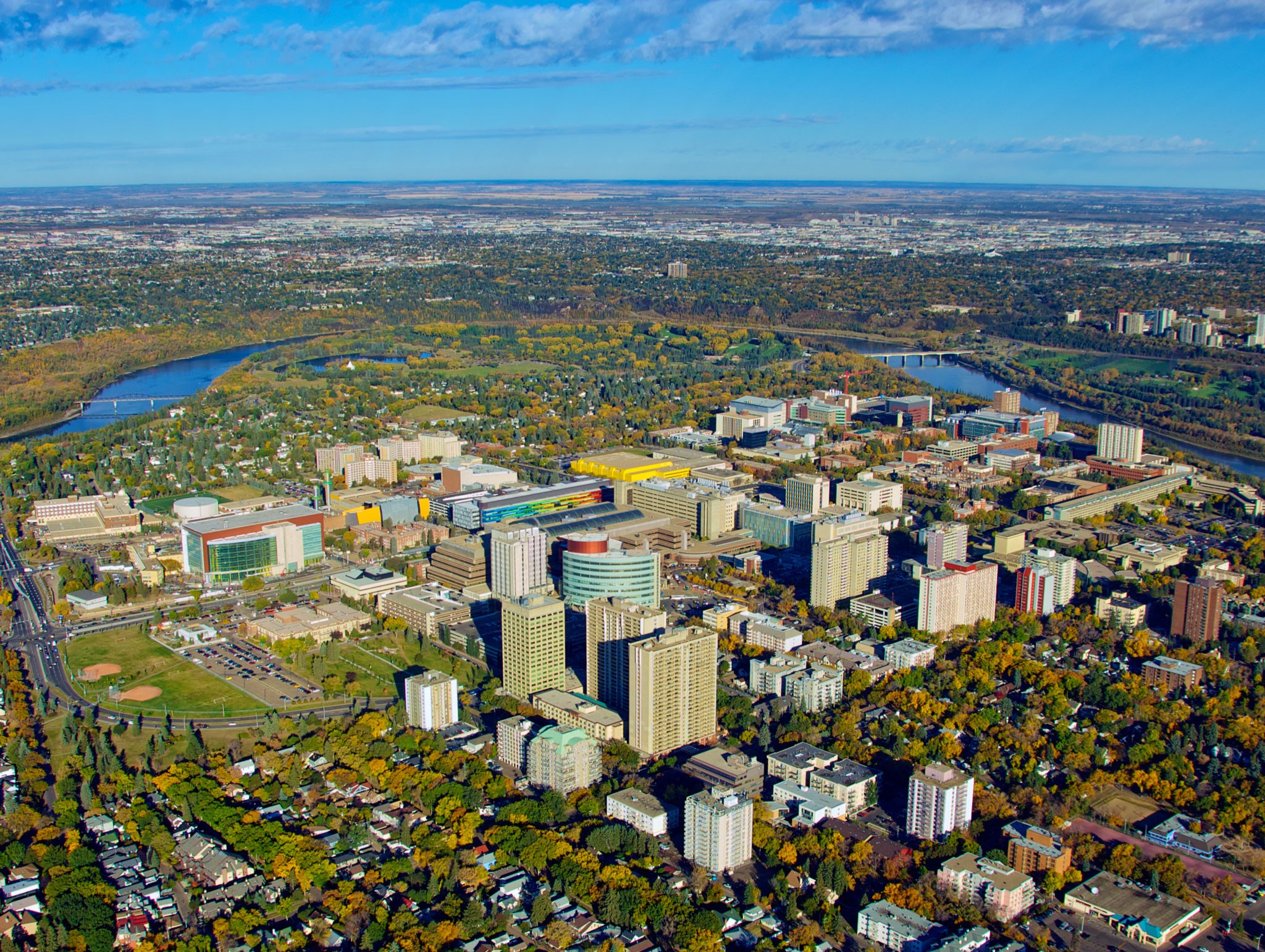
As Alberta's oldest and largest post-secondary institution, the U of A manages more than 1.8 million square metres of complex facility inventory across five distinct campuses. While we have emerged from a period of significant growth in our formal research and learning spaces, we also actively manage large quantities of aged infrastructure, some of which predate World War I. More than 50 percent of U of A buildings were built in the post-war (1951-75) or modern (1976-90) periods, both of which are known for lower standard construction practices.
Many of the critical building systems (mechanical, electrical, and envelope) are at or near their end of life. Our deferred maintenance liability now exceeds $1 billion and, with relatively limited Infrastructure Maintenance Program (IMP) funding from government ($34.9 million in 2018/19), we are facing significant challenges in ensuring our infrastructure continues to adequately support teaching and research outcomes.
As work continues to ascertain the level of deferred maintenance and the risks to our campus infrastructure, we are writing to provide information to assist in clarifying responsibilities and where expert advice can be obtained in order to better support the research and associated teaching missions of the University.
As such, the attached FAQs are provided to assist in understanding some of the terminology in use, clarify where accountabilities and responsibilities lie, and assist researchers in safeguarding vital research.
What are 'base building systems'?What are 'base building systems'?
Base building systems are those directly related to mechanical, gas, utility, sanitary, heating, air conditioning, ventilating, elevator, plumbing, sprinkler, cabling and wiring, and life-safety functions.
Who is responsible for base building systems?Who is responsible for base building systems?
As per the UAPPOL Maintenance Policy, Facilities and Operations is responsible for these systems. It should be noted that Infrastructure Maintenance Program (IMP) funding provided by government is limited and has strict restrictions on its use.
Who is responsible for other systems and equipment?Who is responsible for other systems and equipment?
Beyond base building systems in a research environment, it is the responsibility of each Faculty to meet, maintain, and, if required, monitor and validate that their specific research parameters are being met. F&O can provide faculties with relevant assessment and guidance, as desired.
What are some examples of systems or equipment that are not supported by F&O?What are some examples of systems or equipment that are not supported by F&O?
- A clean room complete with a packaged air-conditioning unit, special filtration, and uninterrupted power source in place to support a specific type of research
- Freezers or refrigerators for storing laboratory research and/or materials (also freezers and refrigerators for staff use)
- Air compressors or vacuum pumps, even when installed in a central mechanical room, that serve one lab or research area
- Specialized water systems (e.g. temperature, filtration, or purifying)
- Air conditioning units for server rooms, environmental chambers, or laboratory equipment such as microscopes, incubators, ovens, chromatographs, scales, sterilizers, glass washers, and cage washers
- Fume hoods, biosafety cabinets, and laminar flow hoods
Who is responsible for program systems and equipment?Who is responsible for program systems and equipment?
Program equipment is the responsibility of the PI through their Faculty. This includes providing all funding related to the purchase, installation, licensing, validation, maintenance, and replacement of systems or equipment. As appropriate and desired, F&O will offer its expertise on the operation and maintenance of the equipment, especially as it interfaces with base building systems. Specifically, F&O is willing and able to advise, assist, and support the installation, long-term monitoring, and maintenance for most research infrastructure recognizing that the ultimate responsibility, including funding of this work, remains with the PI through their Faculty.
What should be done if there may be an impact on a base building system?What should be done if there may be an impact on a base building system?
When considering a modification to systems or equipment or acquiring a piece of equipment that may have an impact on the base building systems (e.g. heavy equipment that may stress floor load or increase power requirements), an early consultation with F&O will be extremely valuable to all parties. F&O is available to provide specialist advice and assistance.
Does F&O provide back-up power systems for research equipment?Does F&O provide back-up power systems for research equipment?
No. F&O provides emergency power only for life safety systems in buildings. In some instances, research systems may be provided with back-up power from this source, however there is no guarantee of uninterrupted power coverage. If research equipment (e.g. freezer, chiller, or computer) requires this type of power back-up, the PI is responsible for the requisite purchase, installation, monitoring, and maintenance. In all instances, early consultation with F&O in advance of such a purchase will help ensure compatibility with base building systems.
Who provides monitoring of critical research systems and equipment?Who provides monitoring of critical research systems and equipment?
It is possible for monitoring to be linked into F&O's control centre. For this to occur properly, such an arrangement must occur at the start of a research project. The costs related to purchasing, installing, and annual calibration are the responsibility of the PI through their Faculty. Conversely, monitoring (including an emergency notification service to the identified parties) will be provided by F&O at no incremental cost to the PI.
How do I obtain advice before I proceed?How do I obtain advice before I proceed?
If you have additional questions regarding who is responsible for what, please contact your Faculty's space liaison who will work with F&O to arrange for the appropriate professionals to respond to your questions.
With whom can I speak in F&O?With whom can I speak in F&O?
The University's Chief Engineer, Keith Hollands, is available to advise on the infrastructure elements necessary to consider before embarking on research activities. Keith can be reached at Keith.Hollands@ualberta.ca.